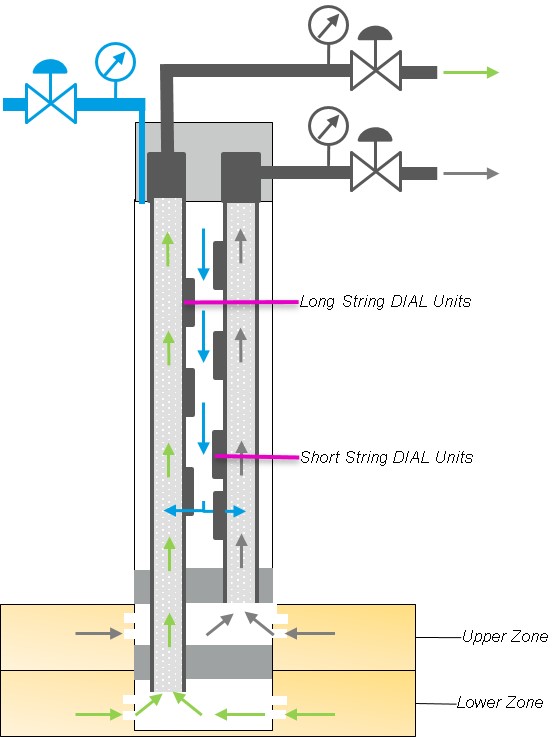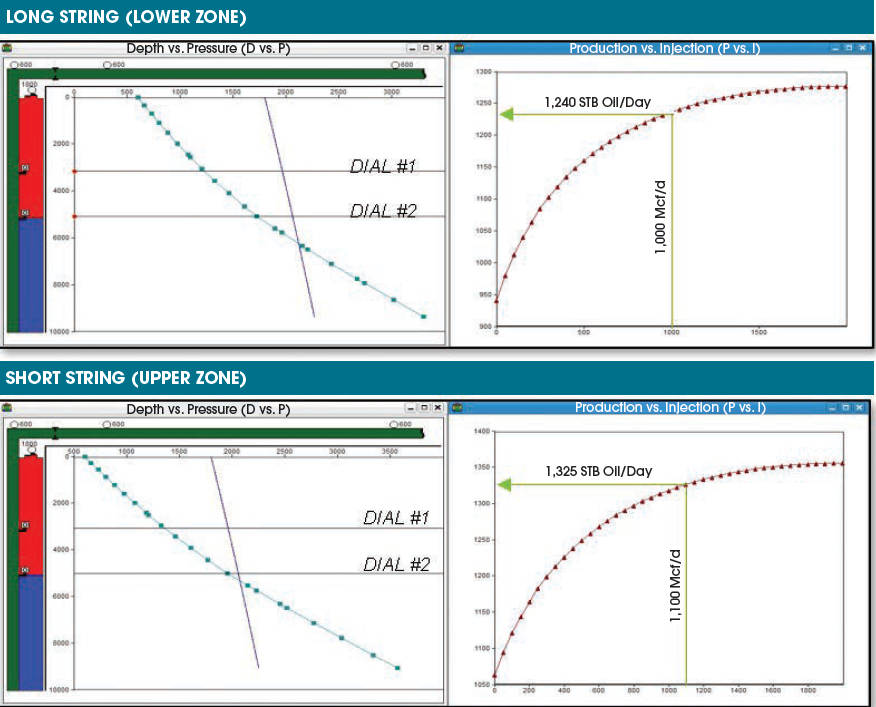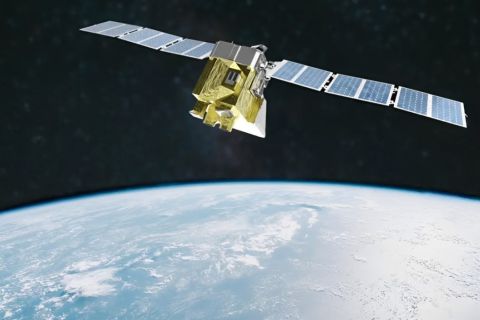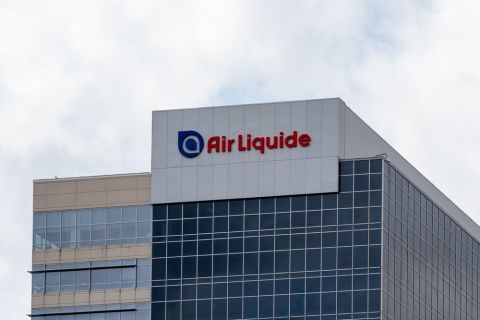[Editor's note: This story originally appeared in the April 2020 edition of E&P. Subscribe to the magazine here.]
Most of the world’s gas-lifted wells are under-optimized due to changing reservoir conditions and fluid composition. Gas-lift valve (GLV) recalibration is required with changing conditions, and an excessive design safety margin is necessary so that the valve change remains valid for as long as possible. Furthermore, when adjusting gas-lift parameters, it is not easy for operators to make data-driven decisions to ensure continuous maximized production.
Gas lift is one of the most widely used forms of artificial lift in the Middle East and Asia-Pacific regions. Gas is injected as deep as possible in the well to increase drawdown on the formation, hence increasing production by reducing the weight of the column of produced fluid.
Despite being extremely compliant, conventional gas-lift technologies can be vulnerable to significant challenges. The risks and costs associated with intervention for offshore and onshore wells can be high, while climate and remote locations can represent additional barriers to production optimization. Other limitations include uncertainties around the effective monitoring and measurement of gas-lift efficiency and intervention for valve deployment to optimize production.
These challenges are amplified with dual completion strings with fluctuating casing pressure, unpredictable temperatures and an inability to individually control injection rates. The string dedicated to the formation with lower productivity and reservoir pressure tends to rob gas from the other string.
In areas where dual completion wells have been used, attempting gas lift from both strings has often been extremely difficult, so much so that some operators have reduced the use of this otherwise highly cost-effective practice.
The combined effect of a lack of data and the need for costly intervention creates production limitations and explains why the majority of gas-lifted wells, particularly dual-string wells, routinely operate in a nonoptimal state.
More data, less uncertainty
Silverwell’s Digital Intelligent Artificial Lift (DIAL) system was developed to optimize production from single- and dual-string gas-lift wells. The system consists of multiple port tubing retrievable gas-lift units placed at each gas lift station. It enables the choice of injection depth, injection rate and unloading sequence to be controlled from the surface. Real-time optimization is possible as pressure/temperature data provide accurate flowing gradient curves.
It has been estimated that DIAL increases production by approximately 20% for single completion wells and more than 40% for dualstring gas-lifted wells.
Plans have been developed with operators to pilot the first worldwide deployments of dual-string digitally controlled gas-lift optimization systems in onshore and offshore dual completion wells. The approach increases safety, efficiency, operability and surveillance.

Production optimization system
The DIAL system consists of multiple gas-lift units that can each include up to six individually controlled independent injection ports with a large spectrum of gas injection rates, which can be varied by opening or closing ports in any combination.
DIAL is controlled by a surface control system connected to all units in a multidrop configuration through a single downhole electrical control line—a tubing encapsulated cable—typically with a one-fourth-inch diameter. The units are spaced using maximum available surface gas injection pressure. The opening of the ports is digitally controlled and not impacted by downhole pressure or temperature.
The surface control system is equipped with a Modbus RS485 connection to link it to a SCADA-type control and data acquisition system, allowing operators to monitor and operate the DIAL system remotely in real time.
Each DIAL unit is equipped with sensors measuring tubing and casing pressures and a temperature sensor. Tubing and annulus pressure gradients and temperature gradients are available in real time because DIAL units are installed at different depths.
As pressure sensors are available on both tubing and casing sides, ΔP across the valves can be measured and downhole gas injection rates can be calculated by using the flow coefficients (Cv values) of the valves being used. Downhole gas rate can then be compared to surface injection rates to ensure all gas injected on surface is used at the point of injection and there are no leaks.
By linking the digital gas-lift system to a dedicated software program, processes such as well unloading, production optimization, gas usage optimization and troubleshooting can be automated under the supervision of the operator.
The ability to install several DIAL units at different depths along the tubing string and the large spectrum of gas injection rates available for each unit allow the design and implementation of a digital gas-lift system for the life of the well. This eliminates costly interventions. Controlling the valves downhole without pressure or temperature dependence also allows efficient operation in both single and dual completion wells.
Dual control
Dual completion wells are analyzed in onshore and offshore operating environments to validate the system. In both applications, both strings share the same casing and gas-lift supply pressure; therefore, it is extremely difficult to allocate the right amount of gas to each specific string, especially as the zones they are producing typically have different reservoir parameters.
DIAL allows control of the gas injection rate directly at the point of injection into the production tubing. The opening and closing of downhole valves are controlled from the surface and allow them to be kept in assigned positions despite changes in casing pressure.
Pressure sensors, together with the Cv values of the valves, allow the calculation of gas injection rates at depth. These can be adjusted by opening more or fewer valves at a given DIAL unit. The injection rate to each string can be independently controlled so that production from both strings is continually optimized, enabling the efficient gas lift of both strings.

Enhanced lift efficiency
The only design requirement is the selection of setting depth for each DIAL unit. Pressure drops are not required between each valve, and full casing pressure can be used from top to bottom when spacing the units, resulting in less stations required and/or a deeper injection point.
Improved production management
The gain realized by the DIAL system in dual gas lift is significant. Modeling of multiple dual-string applications has demonstrated net present value in the tens of millions of dollars onshore. Opex is reduced because no well intervention is required. HSE risk is reduced and lift gas allocation is more efficient. Many dual and single completion wells have been identified that could benefit from this technology onshore, with similar figures estimated for offshore wells.
Conclusion
The implementation of the first worldwide DIAL production optimization system available for dual-string wells represents a significant development in gas lift. It will allow the elimination of inefficiencies inherent to gas lifting with conventional pressure operated valves and enhance well profitability.
At the time of writing, installations are planned for both onshore and offshore. A closed loop automation protocol enabling automated downhole adjustment of gas-lift rate and depth, based on the well condition, is in development to increase the overall efficiency of the system.
Recommended Reading
MethaneSAT: EDF’s Eye in the Sky Targets E&P Emissions
2024-03-07 - The Environmental Defense Fund and Harvard University recently launched MethaneSAT, a satellite tracking methane emissions. The project’s primary target: oil and gas operators.
Exclusive: Scepter CEO: Methane Emissions Detection Saves on Cost
2024-04-08 - Methane emissions detection saves on cost and "can pay for itself," Scepter CEO Phillip Father says in this Hart Energy exclusive interview.
CAPP Forecasts $40.6B in Canadian Upstream Capex in 2024
2024-02-27 - The number is slightly over the estimated 2023 capex spend; CAPP cites uncertain emissions policy as a factor in investment decisions.
Air Liquide to Add CO2 Recycling at Plant in Germany
2024-02-08 - In a supply agreement, Air Liquide and Dow plan to add a new CO2 recycling solution to two air separation units and one partial oxidation plant.
1 Fatality in Equinor Helicopter Training Accident Offshore Norway
2024-02-29 - Equinor employee died following the helicopter accident, the cause of which has not been reported.





